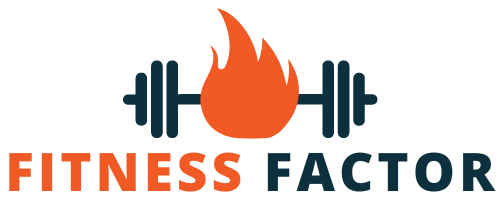Are you tired of the same old exercise routine? Searching for a fun and engaging way to burn calories and achieve your fitness goals? Look no further! Rebounding – the art of bouncing on a mini-trampoline – is the answer you’ve been waiting for. In this comprehensive guide, we’ll explore the wonderful world of rebounding, discuss how many calories you can burn during a session, and reveal how this unique workout can transform your fitness journey. So, let’s jump right in!
Rebounding: The Fun and Effective Workout
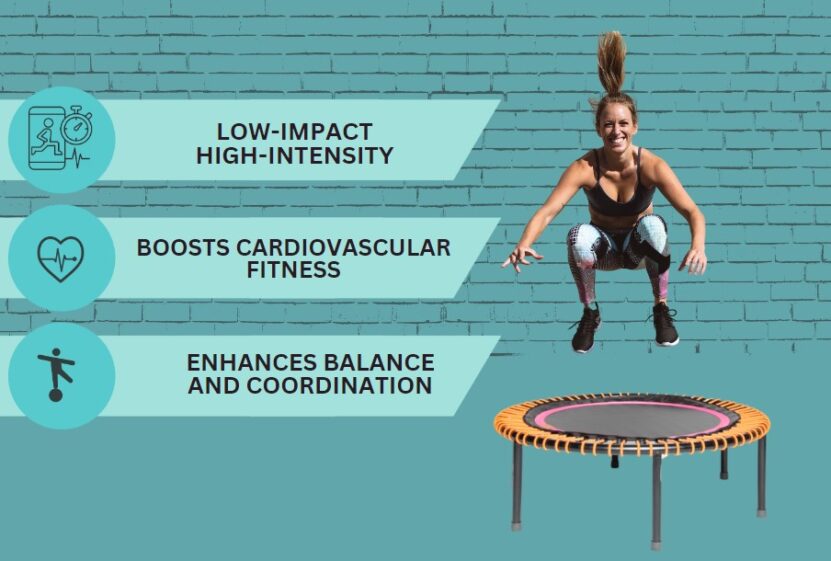
Rebounding isn’t just about having a blast on a mini-trampoline; it’s a powerful, full-body workout that can help you torch calories, improve cardiovascular fitness, and build muscle. Here’s a quick breakdown of the key benefits of rebounding:
Low-Impact, High-Intensity
Rebounding is a low-impact exercise, which means it’s gentle on your joints and suitable for all fitness levels. This makes it an excellent option for people recovering from injuries, older adults, or those who may be intimidated by high-impact activities like running or jumping rope.
Boosts Cardiovascular Fitness
Bouncing on a rebounder increases your heart rate, making it an effective cardio workout. Regular rebounding sessions can improve your cardiovascular fitness and endurance, reducing the risk of heart disease and stroke.
Enhances Balance and Coordination
Rebounding requires you to maintain balance and stability, engaging your core muscles and improving overall coordination. This can help prevent injuries and make everyday activities easier.
How Many Calories Does a Rebounder Burn?

The number of calories burned during a rebounding session depends on several factors, including your weight, age, fitness level, and the intensity of your workout. On average, a 150-pound person can burn approximately 210-300 calories in a 30-minute rebounding session. Here’s a deeper dive into the factors that influence calorie burn:
Weight
The more you weigh, the more calories you’ll burn during a workout. A heavier person will burn more calories during a rebounding session than a lighter person, even if they’re performing the same exercises.
Age
As you age, your metabolic rate decreases, meaning you burn fewer calories at rest and during exercise. Older individuals may burn fewer calories than their younger counterparts during a rebounding session.
Intensity
The intensity of your rebounding workout significantly impacts the number of calories you burn. A high-intensity session involving vigorous jumps, twists, and kicks will burn more calories than a low-intensity workout with gentle bounces.
Duration
The longer your rebounding session, the more calories you’ll burn. Increasing the duration of your workout will help you maximize calorie burn and reap the full benefits of this fun and effective exercise.
How to Maximize Calorie Burn on a Rebounder
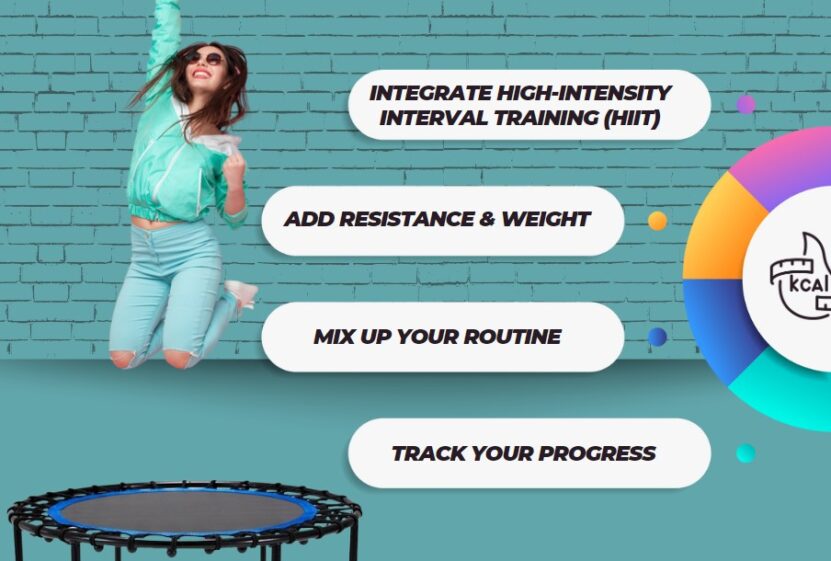
To make the most of your rebounding sessions and burn as many calories as possible, consider incorporating the following tips:
Integrate High-Intensity Interval Training (HIIT)
HIIT involves alternating periods of intense exercise with recovery periods. By incorporating HIIT into your rebounding routine, you can increase the number of calories burned during and after your workout, thanks to the “afterburn” effect.
Add Resistance and Weight
Incorporating resistance bands or light weights into your rebounding workout can increase the intensity and help you burn more calories. Just be sure to maintain proper form and avoid overloading your joints.
Mix Up Your Routine
Variety is the spice of life and fitness. Changing up your rebounding exercises and routines will keep your workouts fresh, challenging, and effective. Experiment with different movements, such as high knees, jumping jacks, and side-to-side jumps, to engage various muscle groups and maximize calorie burn.
Track Your Progress
Using a fitness tracker or heart rate monitor can help you gauge the intensity of your rebounding sessions and ensure you’re working at an optimal level for calorie burning. Aim to work within your target heart rate zone to get the most out of your workout.
Rebounding Safety Tips
To enjoy a safe and effective rebounding experience, keep these essential tips in mind:
Choose the Right Rebounder
Invest in a high-quality rebounder with a sturdy frame, durable springs or bungees, and a non-slip jumping surface. A well-constructed rebounder will provide better support and reduce the risk of injury.
Warm Up and Cool Down
Before starting your session, spend a few minutes warming up with dynamic stretches and gentle bouncing. Similarly, cool down after your workout with static stretches to help prevent muscle soreness and injury.
Maintain Proper Form
Good form is essential when rebounding. Keep your core engaged, your knees slightly bent, and your feet hip-width apart. Avoid bouncing too high, especially when you’re new to it, as this can increase the risk of injury.
Listen to Your Body
If you experience pain, discomfort, or dizziness during your rebounding session, stop immediately and consult a healthcare professional. It’s crucial to listen to your body and not push yourself beyond your limits.
The benefits of rebounding beyond calorie burn
Rebounding, also known as mini trampoline exercise, has become increasingly popular due to its numerous benefits beyond calorie burn. While it provides an excellent cardiovascular workout that can help burn calories and aid in weight loss, it also has several other benefits for the body.
One of the most significant benefits of rebounding is its impact on lymphatic drainage. It can help stimulate the lymphatic system, which is responsible for removing toxins and waste from the body. This can lead to improved immune function, better circulation, and reduced inflammation.
It can also improve balance and coordination by engaging the core and lower body muscles. It can also help strengthen bones and joints, making it an excellent low-impact exercise for individuals with arthritis or other joint problems.
Additionally, it can have positive effects on mental health by reducing stress and anxiety levels. The rhythmic bouncing motion can help calm the mind and provide a meditative experience.
How rebounding affects the cardiovascular system
Rebounding, also known as trampoline exercise, is a low-impact activity that provides an effective cardiovascular workout. The rhythmic bouncing motion engages the leg muscles, which helps to increase blood flow and oxygen delivery throughout the body. This, in turn, strengthens the heart and lungs, improving overall cardiovascular health.
It can also improve heart rate variability (HRV), which is a measure of the variability of time between heartbeats. A higher HRV indicates better cardiovascular health and a lower risk of heart disease.
Another benefit of rebounding on the cardiovascular system is its ability to improve circulation. The up-and-down bouncing motion helps to move blood and lymphatic fluids through the body, promoting the removal of waste and toxins.
Rebounding versus weightlifting
They are both effective exercises for burning calories and building muscle, but they work in different ways. Weightlifting primarily focuses on building muscle mass and strength, while rebounding focuses on improving cardiovascular fitness and overall body tone.
Weightlifting involves lifting heavy weights or using resistance machines to target specific muscle groups. This type of exercise leads to muscle hypertrophy, which is the process of increasing muscle size and strength. While weightlifting burns calories, it is not as effective as rebounding for cardiovascular fitness.
Rebounding, on the other hand, involves bouncing on a mini trampoline, which engages the leg muscles and improves overall body tone. While it may not be as effective for building muscle mass as weightlifting, it is an excellent exercise for burning calories and improving cardiovascular health.
Rebounding Workouts for Maximum Calorie Burn
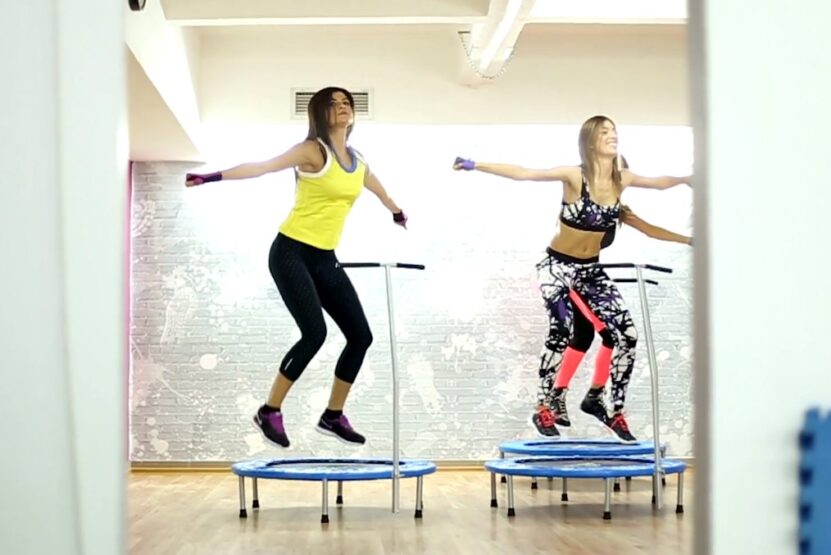
Ready to bounce your way to better health? Here are three rebounding workouts designed to maximize calorie burn:
Beginner’s Workout
- Warm-up: 5 minutes of gentle bouncing
- Circuit: Repeat the following exercises for 30 seconds each, with a 30-second rest between each exercise
- Basic bounce
- High knees
- Jumping jacks
- Side-to-side jumps
- Cool-down: 5 minutes of gentle bouncing and stretching
Intermediate Workout
- Warm-up: 5 minutes of gentle bouncing and dynamic stretching
- Circuit: Repeat the following exercises for 45 seconds each, with a 15-second rest between each exercise
- Basic bounce
- High knees with arm swings
- Jumping jacks with resistance bands
- Side-to-side jumps with a twist
- Front kicks
- Cool-down: 5 minutes of gentle bouncing and stretching
Advanced Workout
- Warm-up: 5 minutes of dynamic stretching and bouncing
- HIIT Circuit: Perform each exercise for 30 seconds, followed by a 30-second rest, then repeat the entire circuit 3 times
- Tuck jumps
- Sprinter’s bounce
- Plyometric jumps
- Skaters
- Mountain climbers on the rebounder
- Cool-down: 5 minutes of gentle bouncing and stretching
FAQs
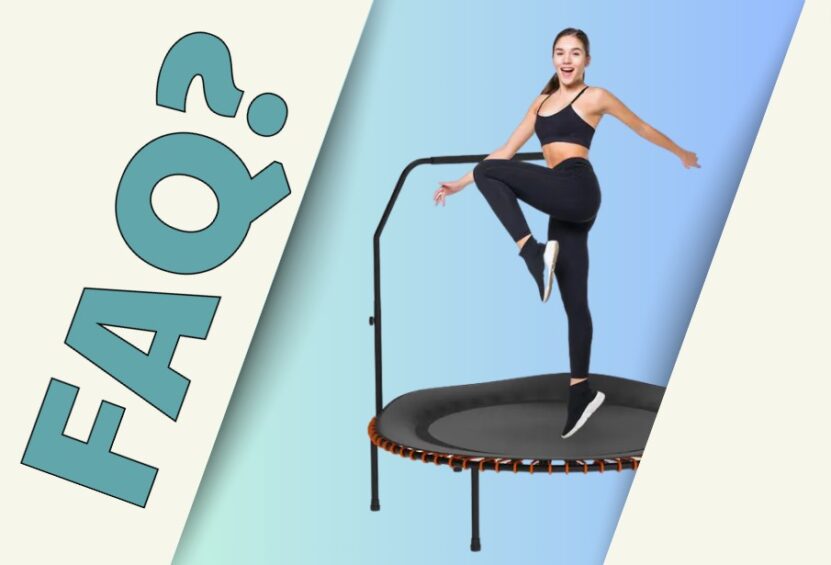
Is rebounding a good exercise for individuals with joint problems?
Yes, it is a low-impact exercise that can be beneficial for individuals with joint problems.
How often should I rebound to see results?
Training 3-5 times per week can lead to noticeable results in cardiovascular health and body tone.
Can rebounding be combined with other exercises?
Yes, it can be combined with other exercises for a more varied and effective workout routine.
How do I increase the intensity of my rebounding workout?
Intensity can be increased by adding resistance bands, hand weights, or incorporating high-intensity intervals.
Is rebounding safe for pregnant women?
It is recommended to consult with a healthcare provider before starting any exercise program during pregnancy, including rebounding.
How can I track the number of calories burned during rebounding?
Fitness trackers or calorie calculators can be used to estimate the number of calories burned during rebounding.
What are some common mistakes to avoid while rebounding?
Common mistakes include jumping too high or too hard, using improper form, and rebounding on an unstable surface.
Conclusion
Rebounding offers a fun, low-impact workout that can help you burn calories, improve cardiovascular fitness, and enhance overall well-being. By considering factors such as weight, age, intensity, and duration, you can tailor your rebounding sessions to maximize calorie burn and achieve your fitness goals. With a variety of workouts and safety tips at your disposal, it’s time to bounce your way to a healthier, happier you!
